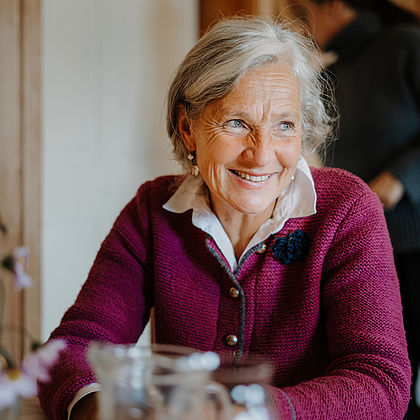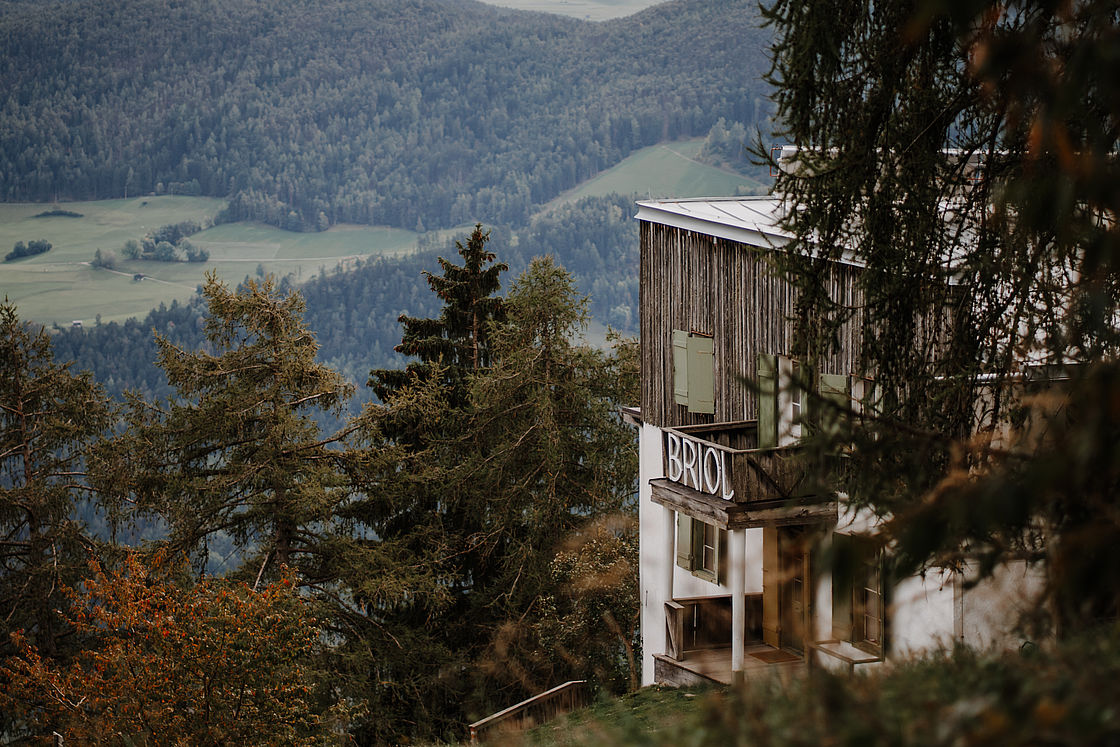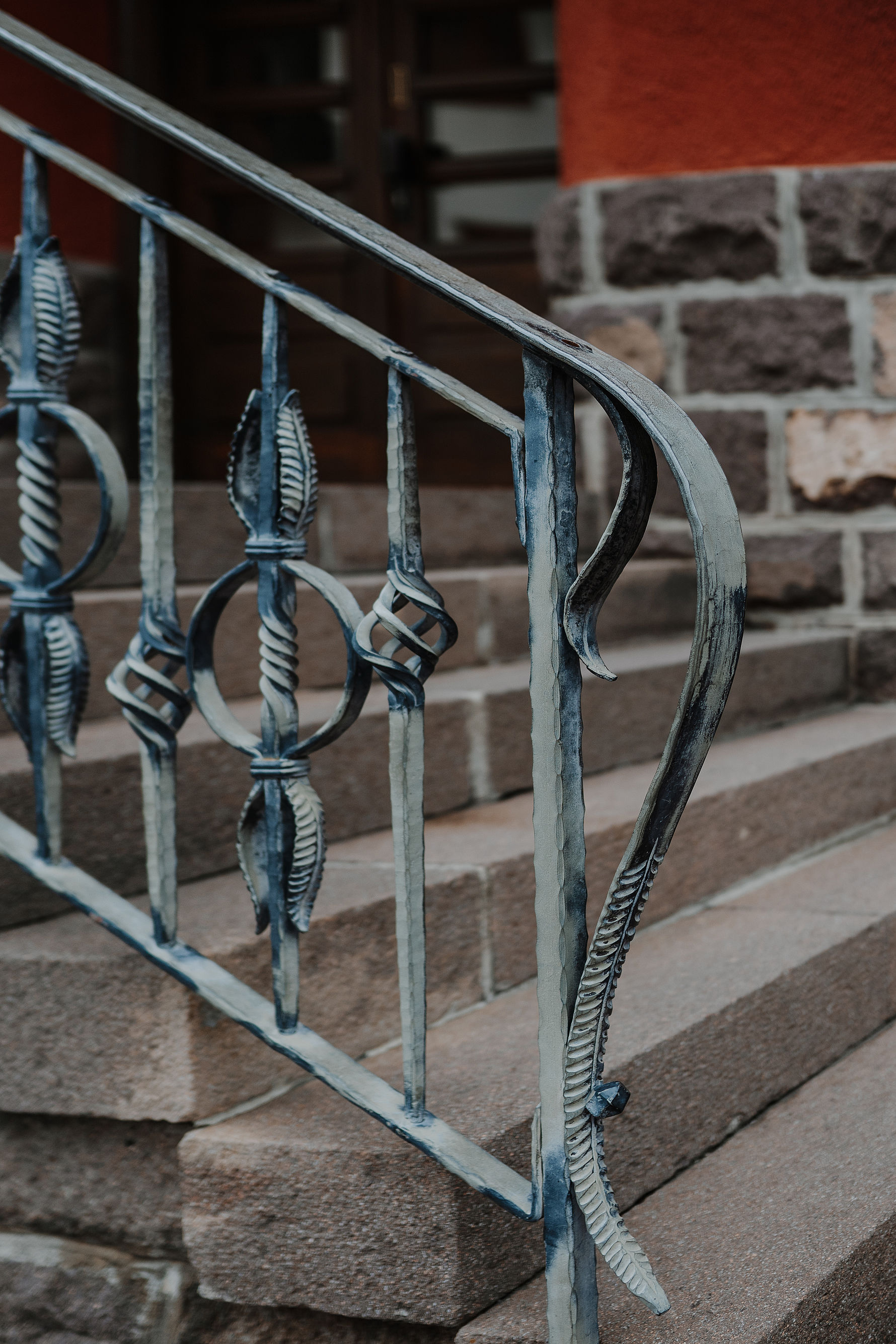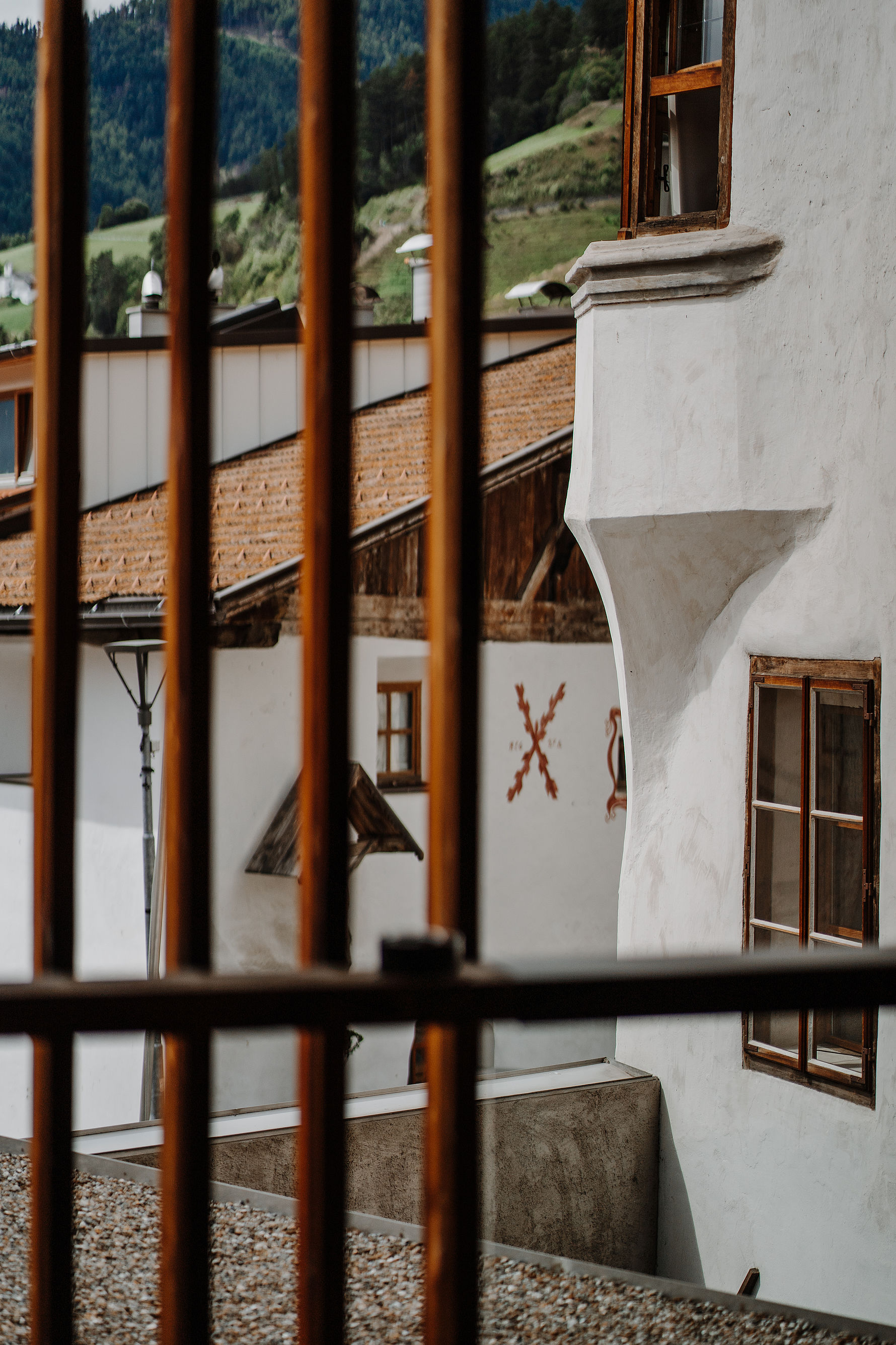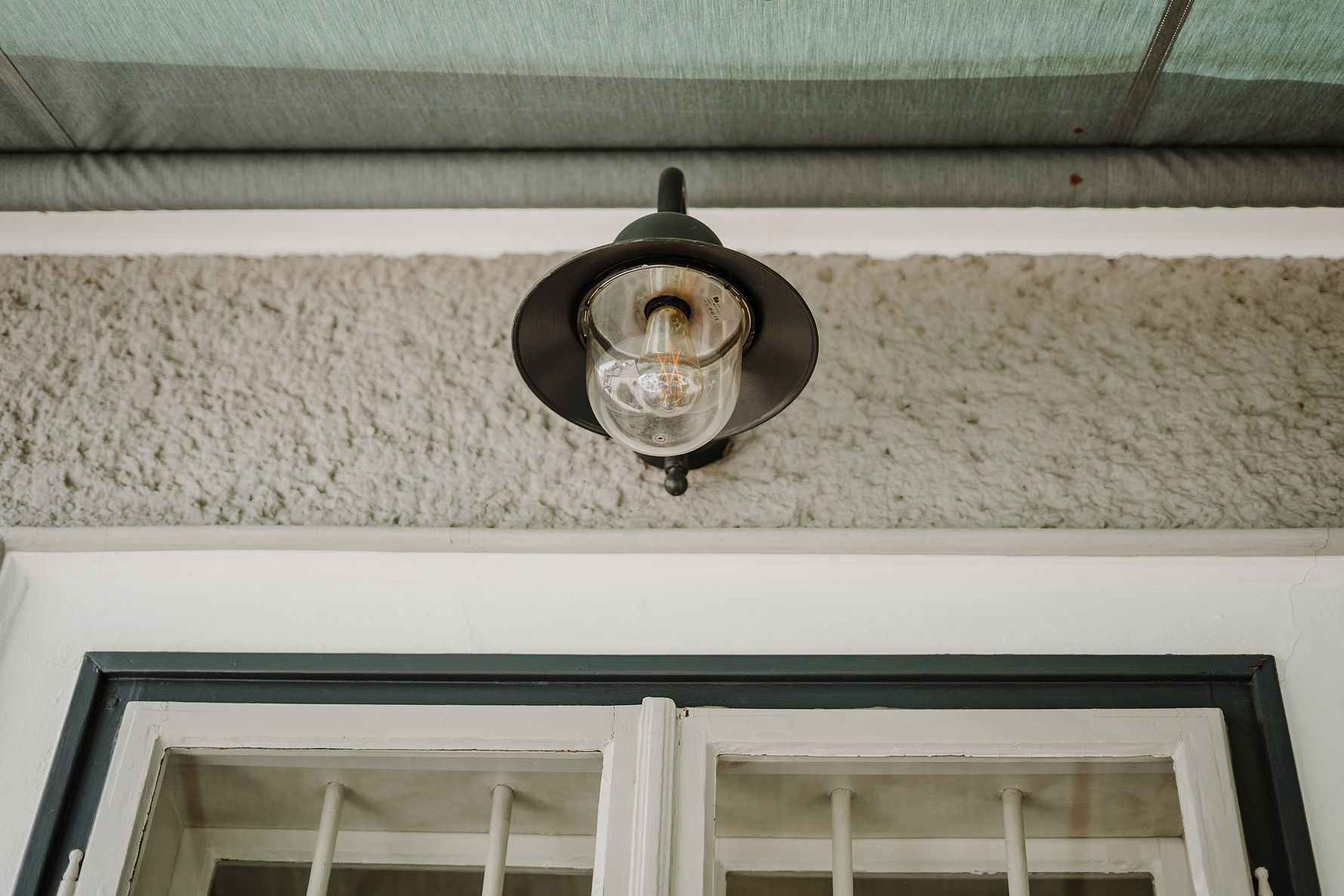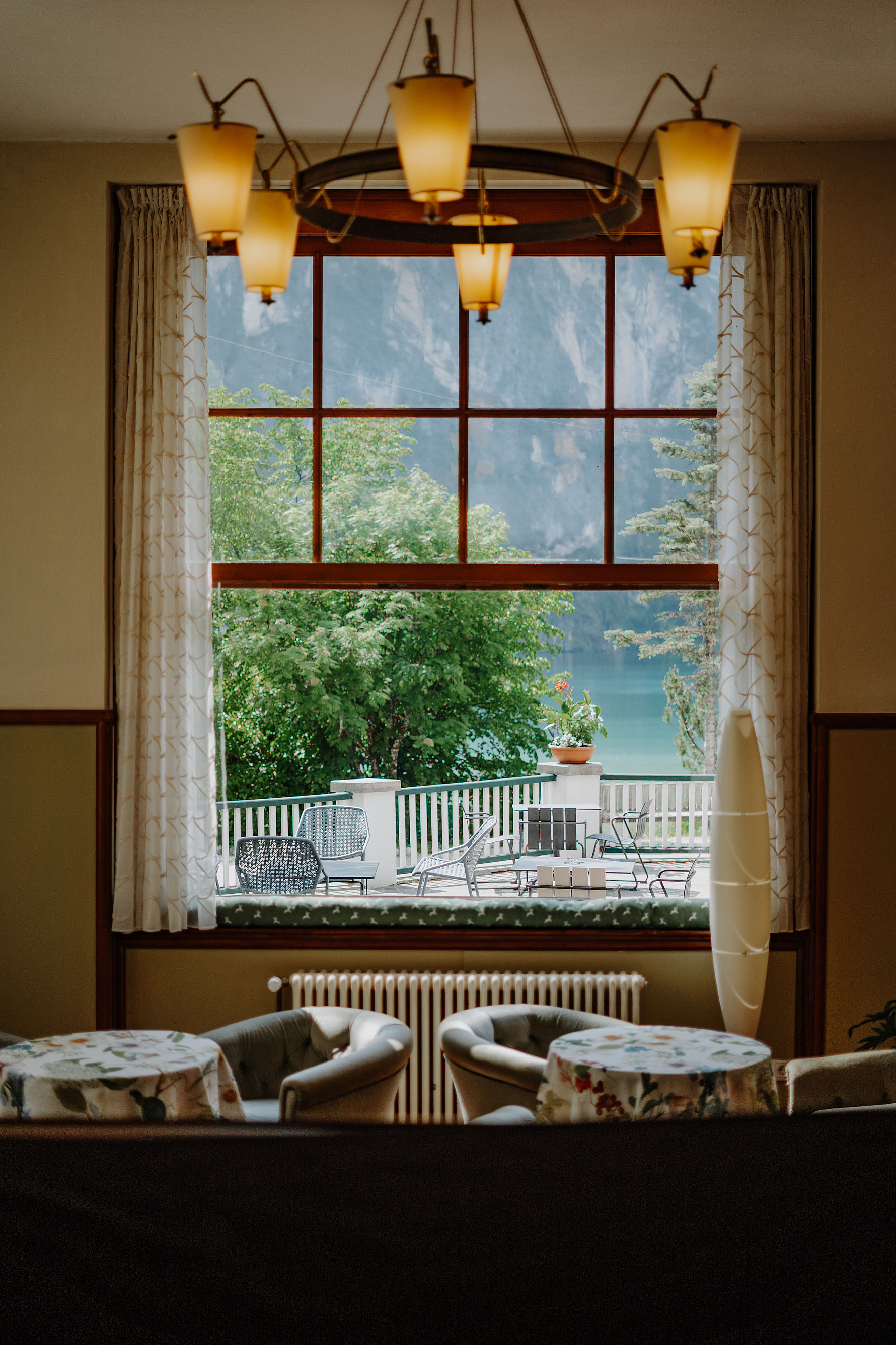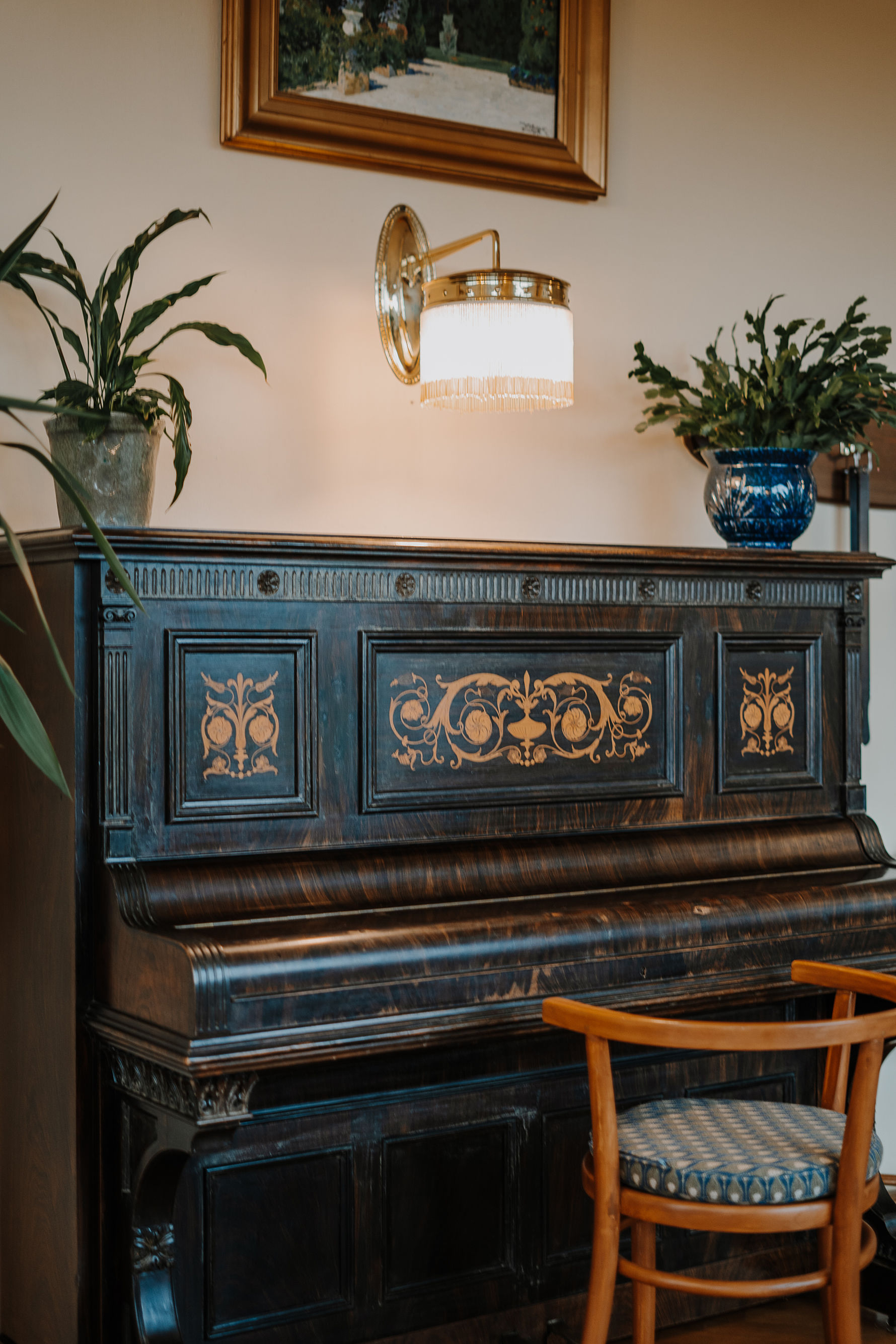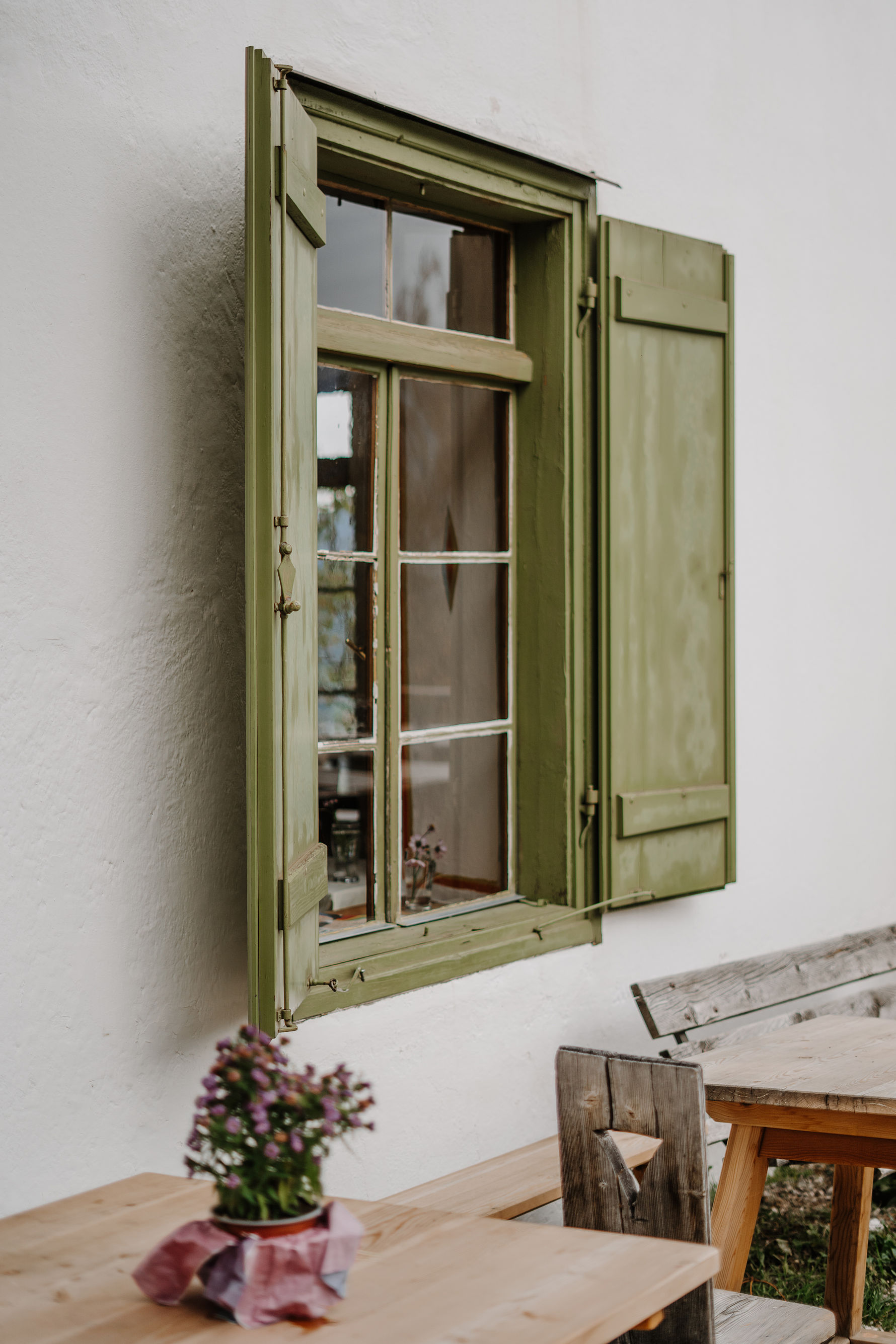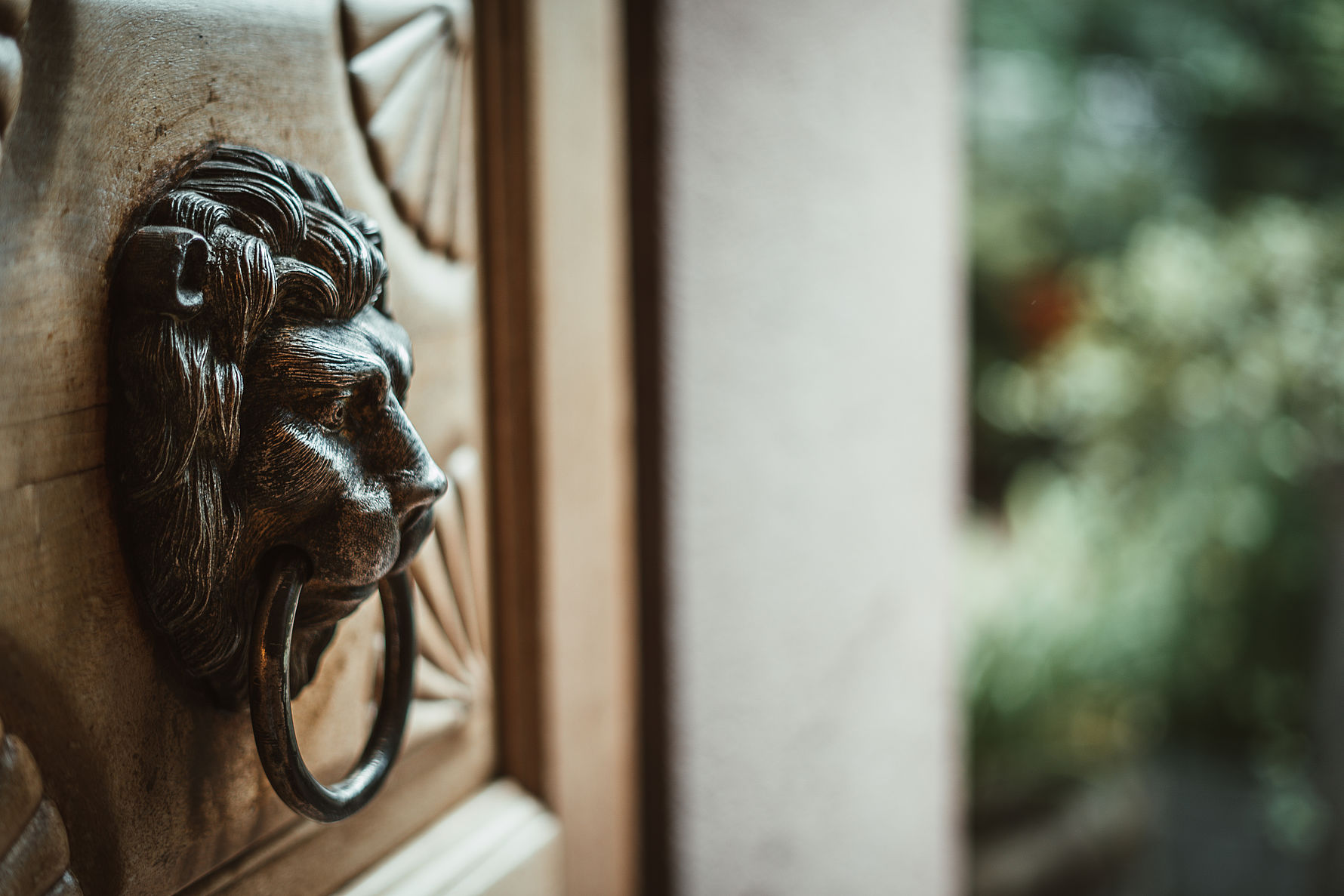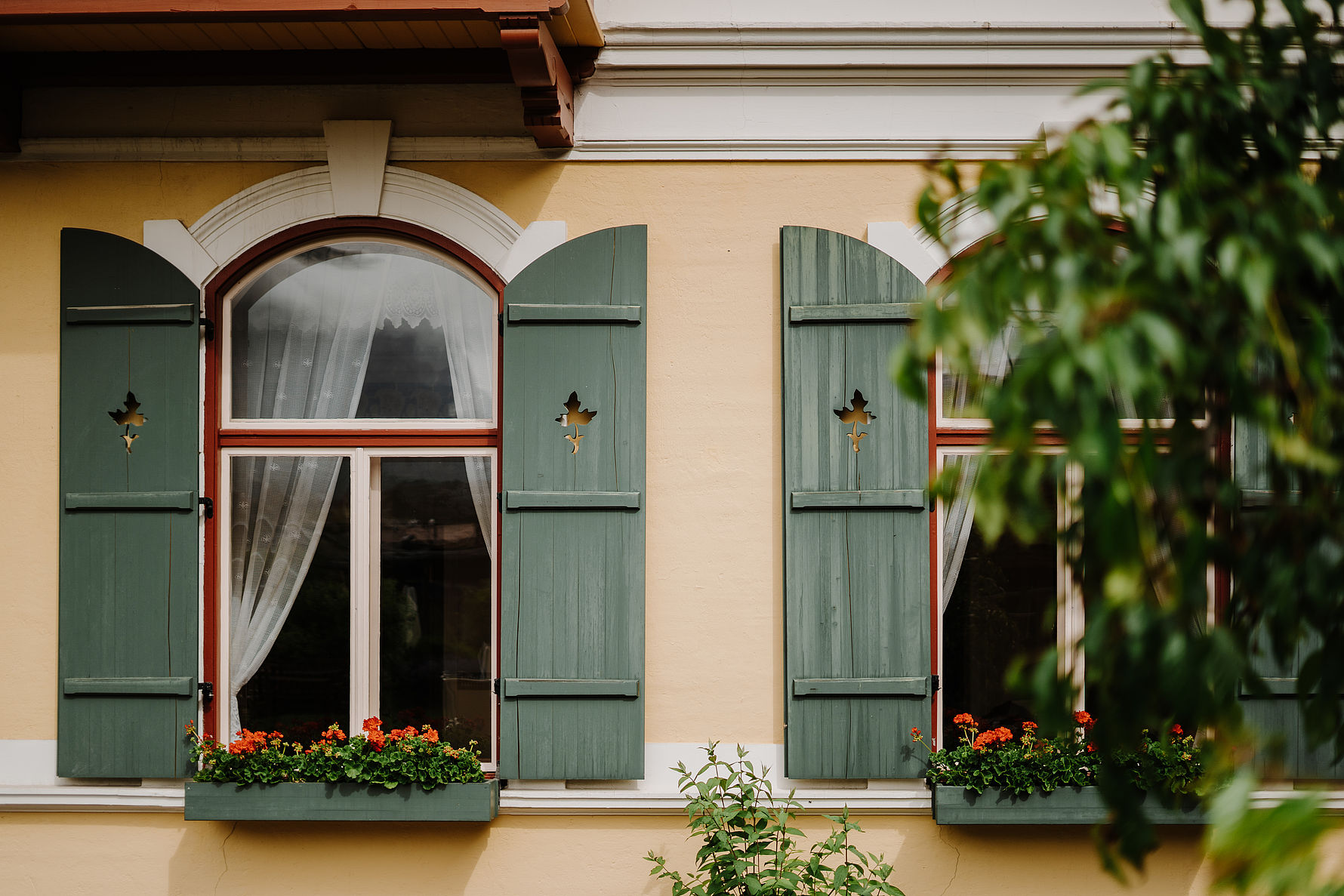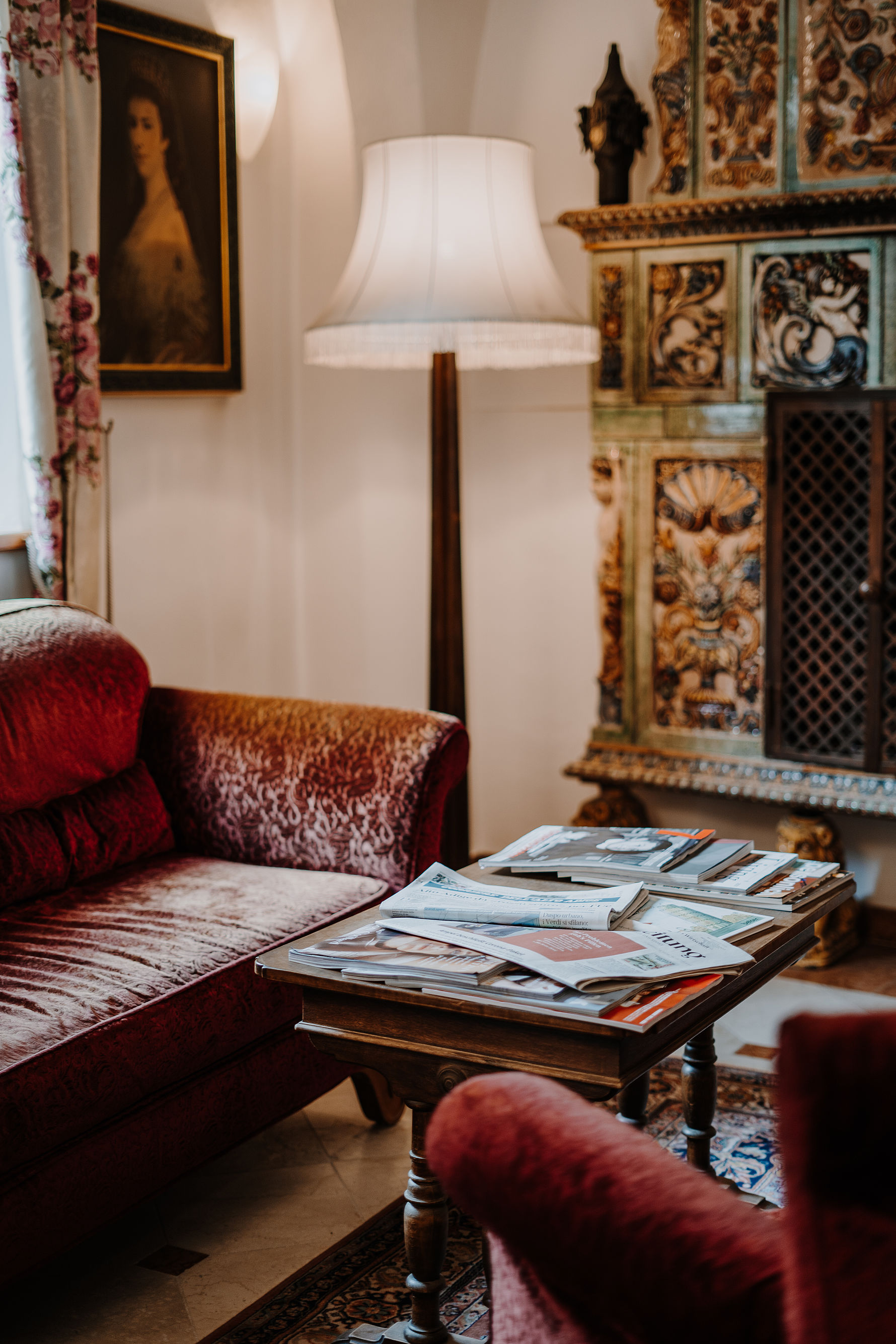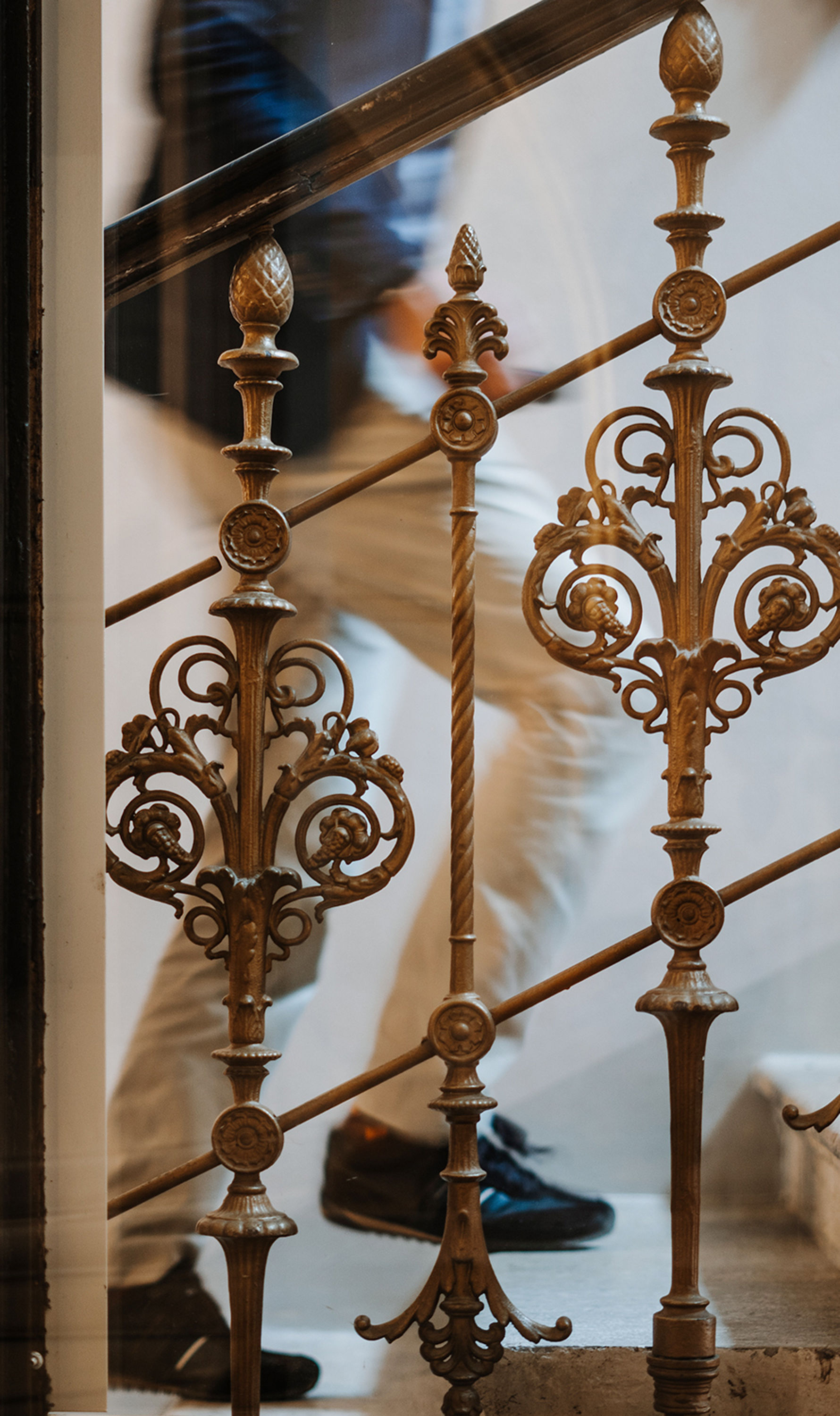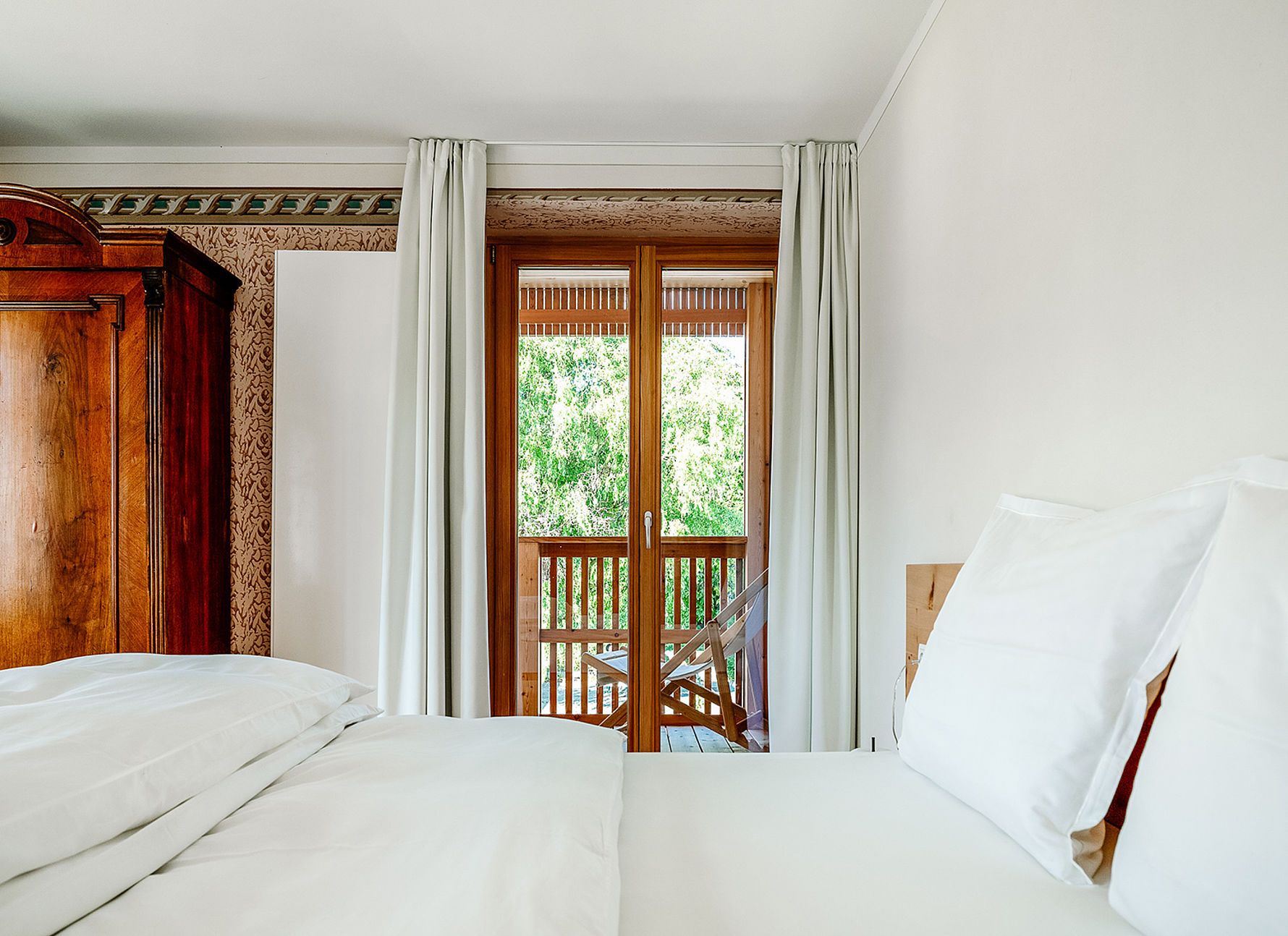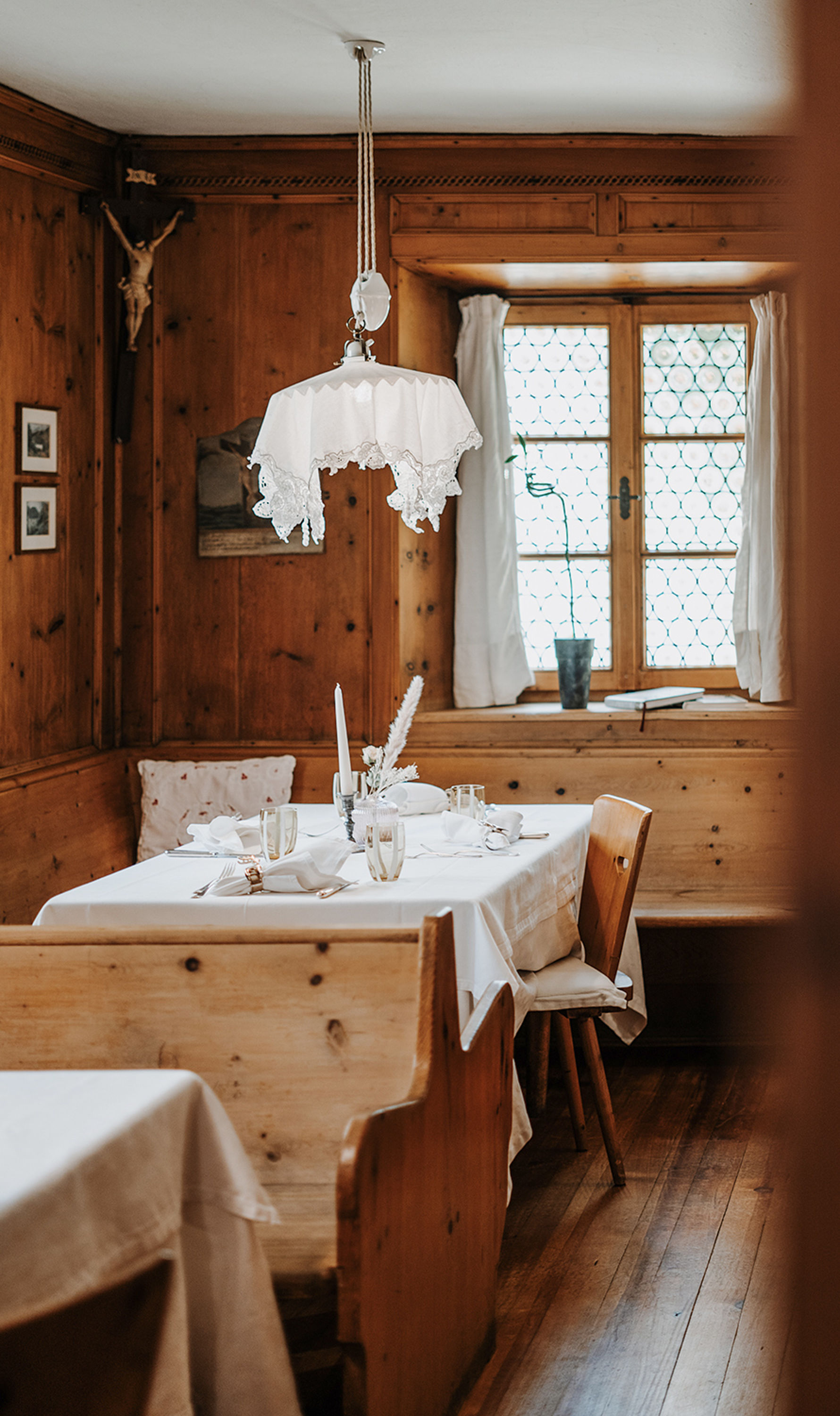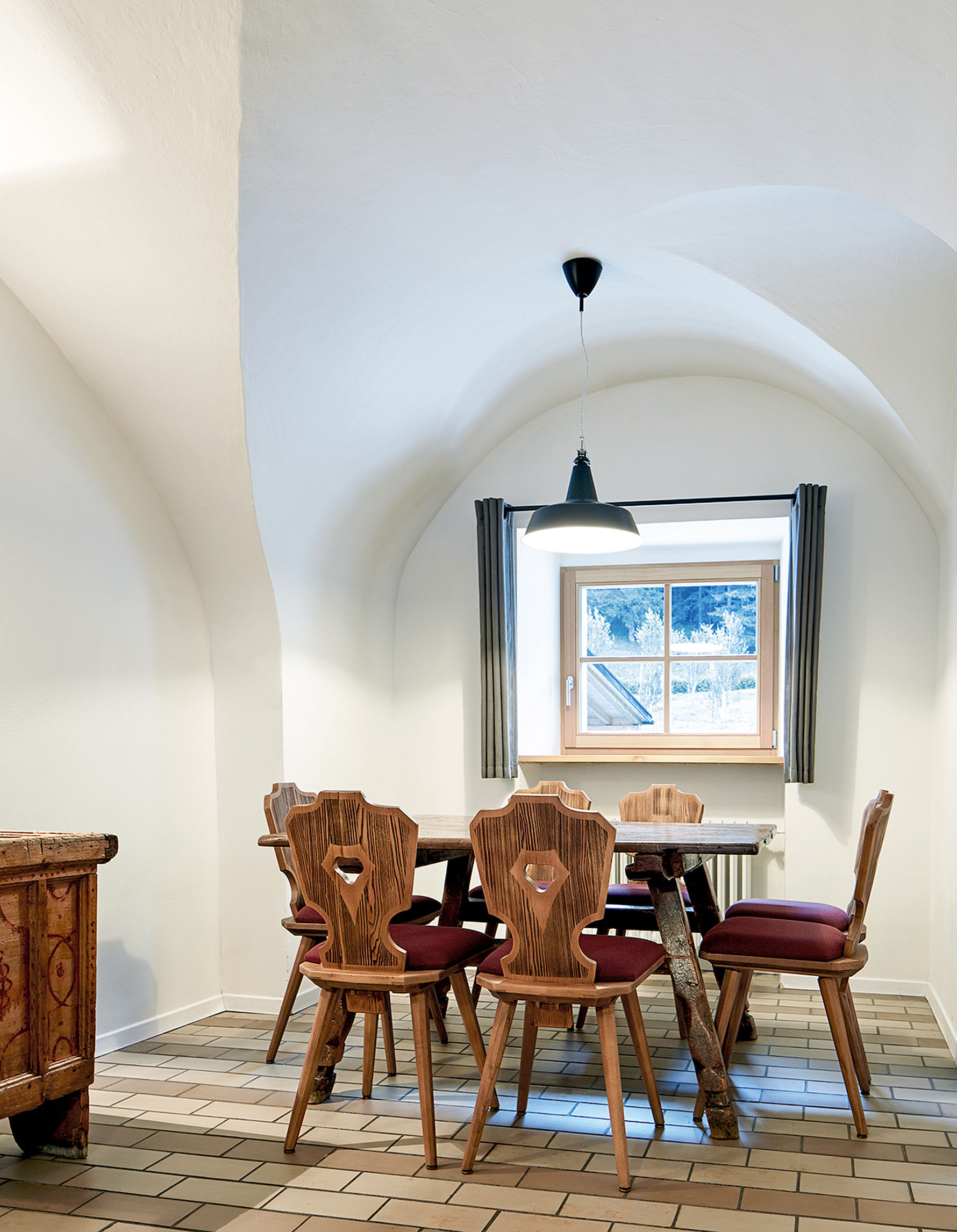Johanna Fink about the Briol in Tre Chiese, her great-grandmother and ‘Mountain Mother’ Johanna Settari, and top-class guests recovering the ground beneath their feet in Hubert Lanzinger’s gesamtkunstwerk high up on the mountain.
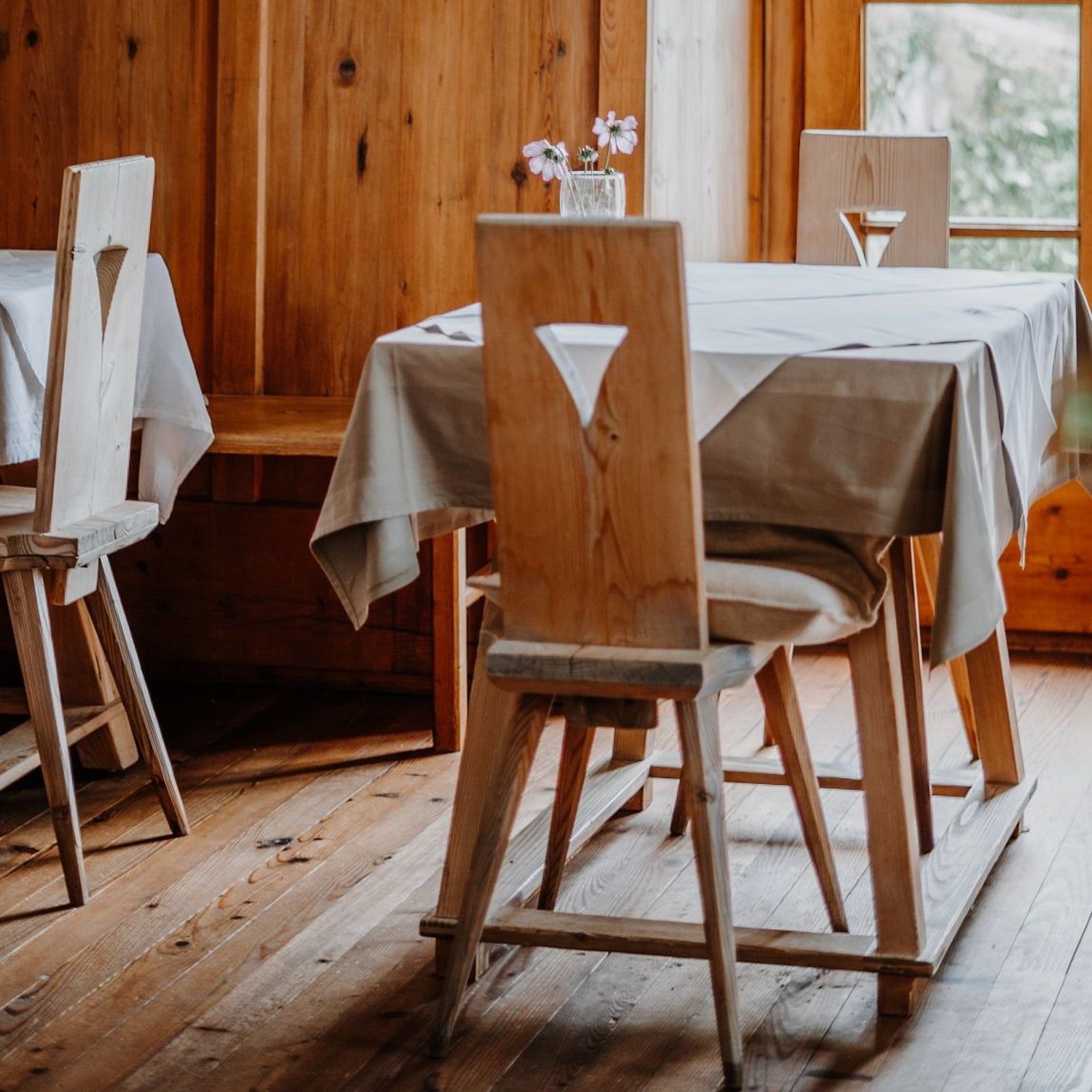
Historic: Would you please tell us about the origins of the Briol?
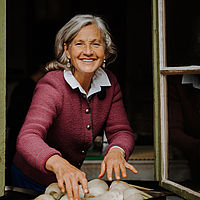
Johanna Fink
Hostess at the Hotel Briol
The Mountain Mother was Johanna Settari, my great-grandmother. It was she who established the Briol. When she was a child, her father used to take her on frequent walks to Tre Chiese. Although she came from a wealthy family, the Ringlers, and her father sent her out to see the world, her strong ties to this place remained.
To get her education, Johanna then went to Bolzano, where she met her future husband Heinrich Settari. Heinrich had acquired some wealth dealing in silk and porcelain. They had 15 children, and for each birth, Heinrich asked his wife what she wanted for a present. Johanna asked for a plot of land up here on the mountain each time.
How does an iconic building like this one get up here?
Johanna Fink: Originally, there was an old farmhouse here with a gabled roof. Johanna Settari commissioned Hubert Lanzinger to rebuild it. He was a young, up-and-coming artist from Vienna-and also her son-in-law.
Lanzinger created the Briol as we see it today in 1928. He rebuilt the farmhouse in a manner that could only be called revolutionary at the time: by adding the memorable flat roof and an atrium, rooms awash with light, and large windows. The circular open-air, spring-water swimming pool next to the house was the first of its kind in all South Tyrol! You will find Lanzinger’s style all through the building; he designed various details such as the chairs, the cutlery, and the clock in the reading room.
How many houses did Johanna Settari have built up here?
Johanna Fink: A total of 15, one for each child. Five of them are open to guests today. Johanna Settari was just obsessed with building. (Laughs.) Even in her old age she kept rebuilding or expanding houses. She was very far-sighted and a bit of a genius
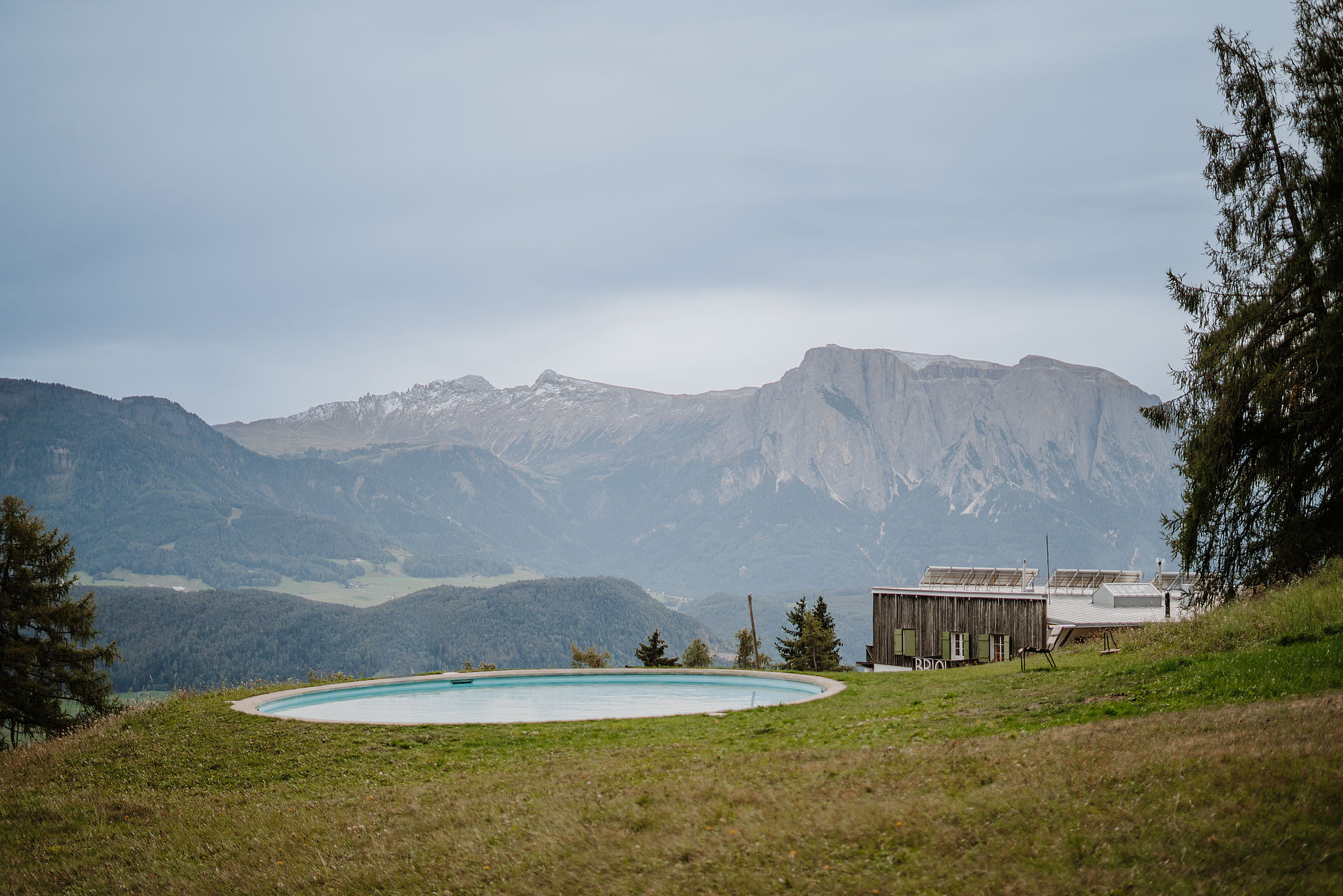
The circular open-air, spring-water swimming pool next to the house was the first of its kind in all South Tyrol!
Who ran the Briol before you?
Johanna Fink: My three unmarried aunts did for 35 years. They were real pioneers. We have them to thank for everything still looking like this today. While everybody else tore down their houses to build new ones, my aunts kept modestly running and maintaining the Briol.
Where did the guests come from at the time?
Johanna Fink: Everywhere: Russia, America, Germany. We had architects, actors, artists, truly a top-class crowd. The sculptor Hans Wimmer came from Munich, for example, and the film director Hans-Jürgen Syberberg. There were numerous doctors as well, such as the Hamburg neurologist Rudolf Kautzky. Just to name a few.50 or 60 years ago, they all encouraged my aunts to keep the building the way it was. They were all happy, they didn’t want more. And they still don’t.
»We were free up here on the mountain, we could be as we were.«
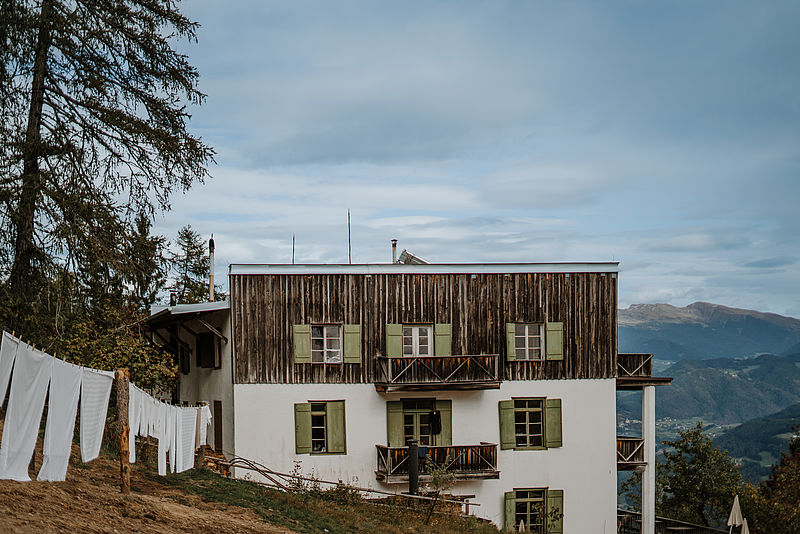
Hotel Briol
White shimmers the linen on the clothesline, greeting the wayfarers as a sign of warm originality as Hotel Briol surfaces between meadows and forests above the small village of Barbiano in the Isarco Valley.
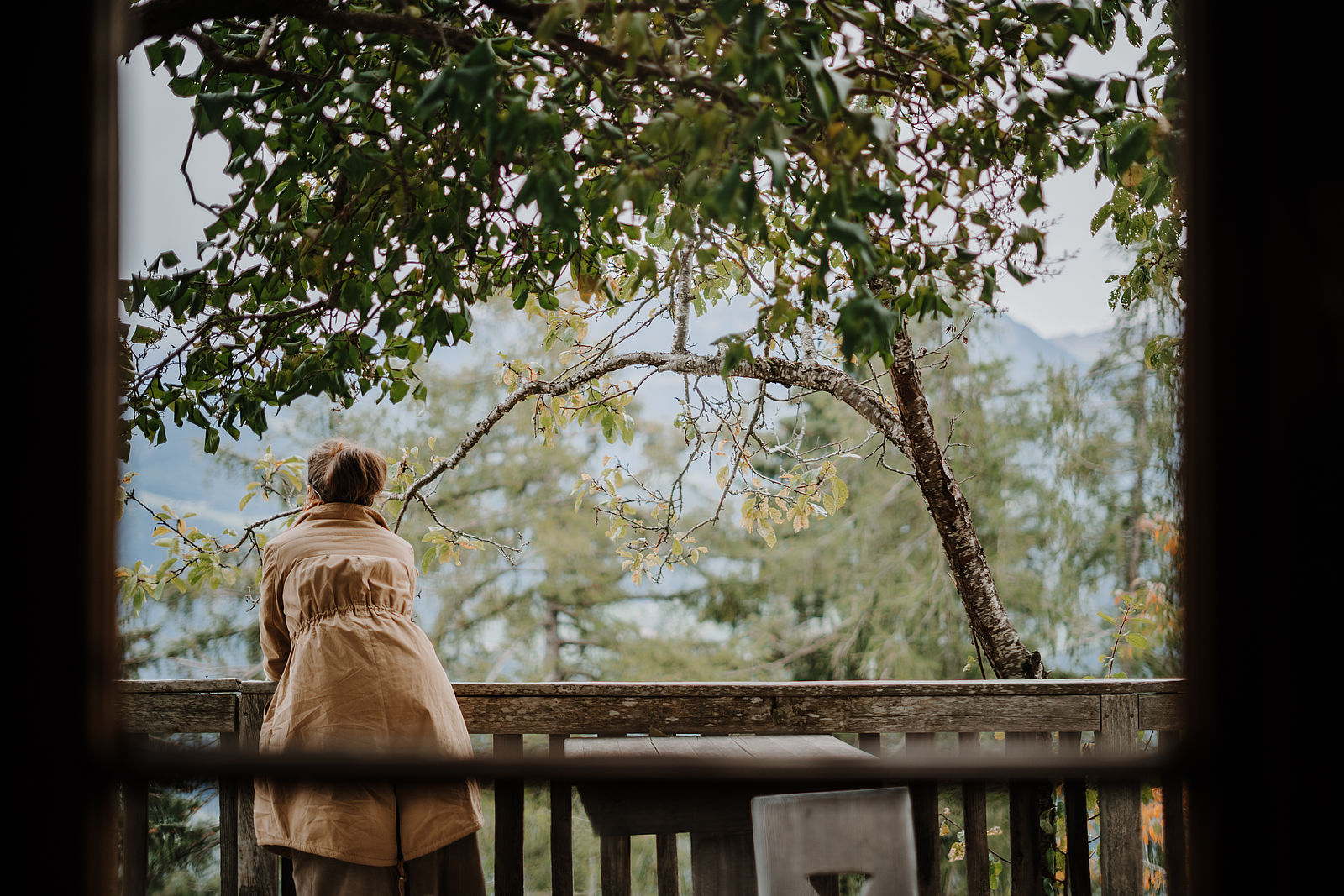
How did this philosophy survive over so many decades?
Johanna Fink: Johanna Settari made a pioneering will. She set up three rules. First of all, she made sure the property was handed down within the family exclusively. Second, she wanted everything to be nourished and cherished with love and care. And third, no fences must be built. This is why one walks through Tre Chiese and the Briol as if through parkland. That’s really extraordinary, a sense of generosity.
You came here yourself for your summer holidays as a child. Would you share some of your memories?
Johanna Fink: It was really hard for me to put my shoes back on to go to school after four barefoot months. We were free up here on the mountain, we could be as we were, sleep in the hay and the meadows, walk barefoot. We were allowed to do what children want to do. Carefree.
Looking around, everything still feels very homey
Johanna Fink: That’s because everybody takes more care. Sharing a bathroom only works when everyone leaves it in a good condition. Everyone is very appreciative. It’s how I perceive it but also what the guests tell me.
Every evening, a bell rings to announce dinner. What’s the story behind this ritual?
Johanna Fink: This bell was already here when I was a child. We children used to fight for it. Everybody got one last round around the house with the bell in the end. (Laughs.) Maybe the reason is that the 15 houses up here are all built within earshot. After all, there was no telephone back then, so people would shout their messages to each other: from here down to the building called Herrgottsbödele, from there over to the so-called Coffee Grinder, and so on. The bell was probably just a signal for everyone to come here. Like it is now for dinner.


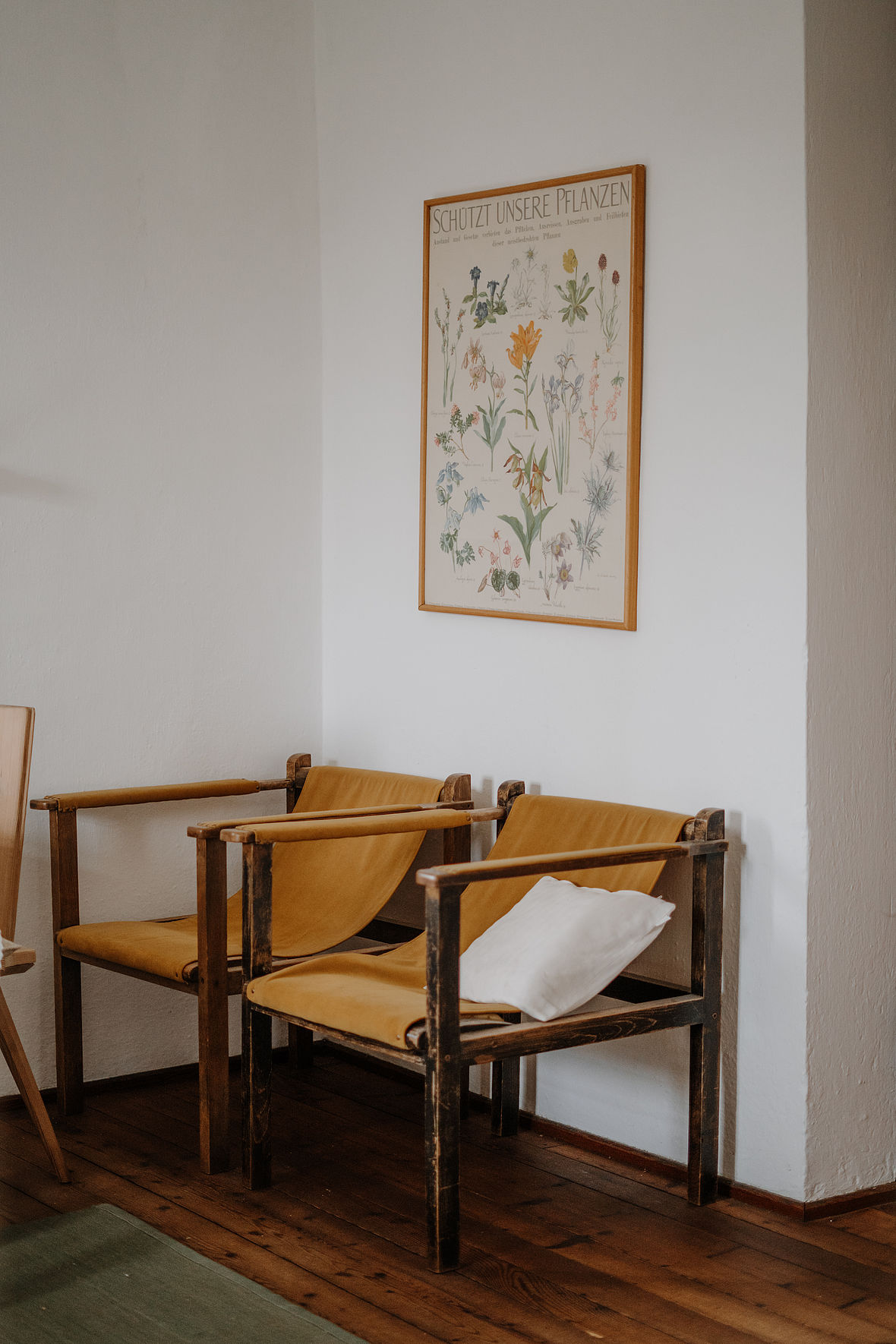
Could you tell us more about those unusual building names? Why is the Coffee Grinder called that?
Johanna Fink: That house has many names: the Coffee Grinder, the Welzenbacher Villa, Villa Settari. Johanna Settari had the architect Lois Welzenbacher build it for one of her daughters, Mimi Settari. Mimi would have liked to marry Welzenbacher, but it never came to that. But at least he built her a house, and that house has a stove in the middle. The whole building seemingly revolves around this stove and goes upwards in a circular shape, like a coffee grinder. Welzenbacher himself chose this name.
And the others?
Johanna Fink: The name Briol is a traditional name. It goes back to the word for clearing or oasis. The Herrgottsbödele (‘Lord’s little ground’) is a creation by Hubert Lanzinger, who also rebuilt the Briol. When you see the place, which is five minutes down from here, you will know why he called it that. It is simply divine: a small plane in the middle of the mountain; he made a beautiful garden there.
